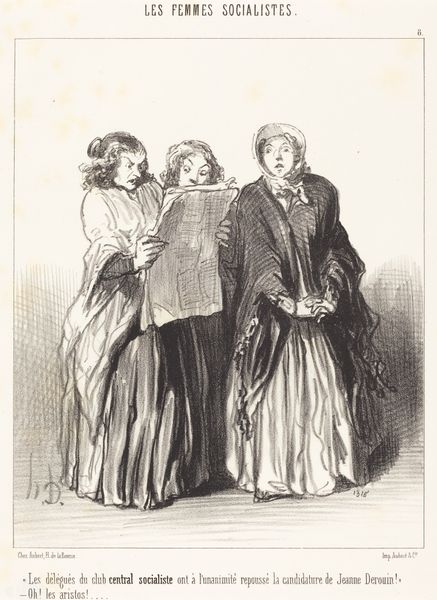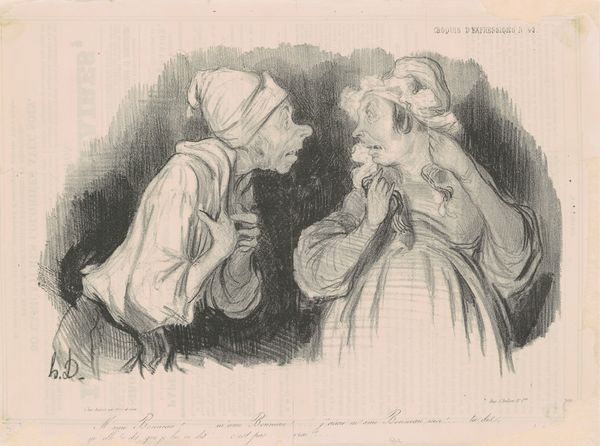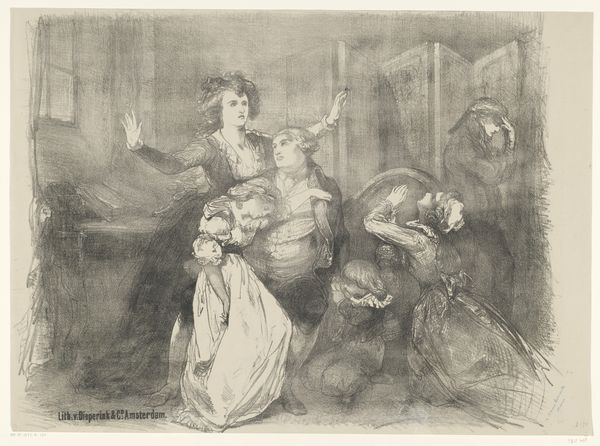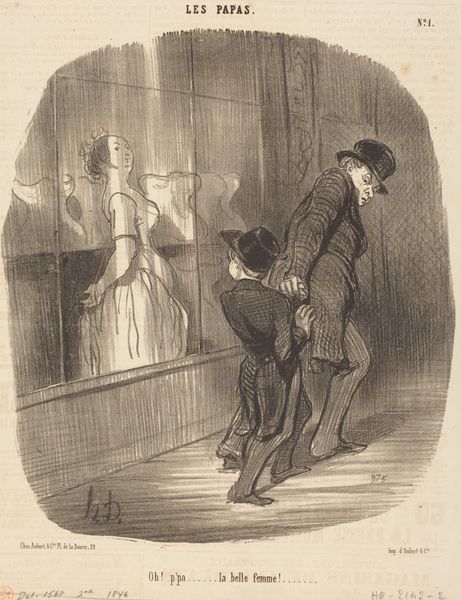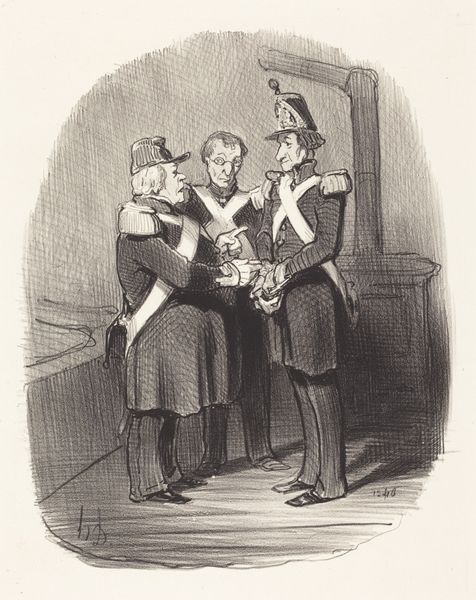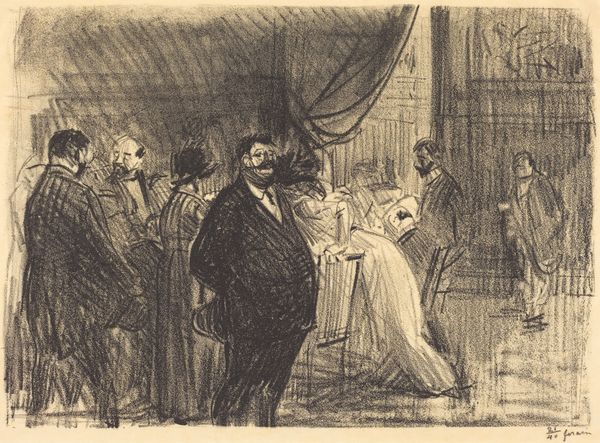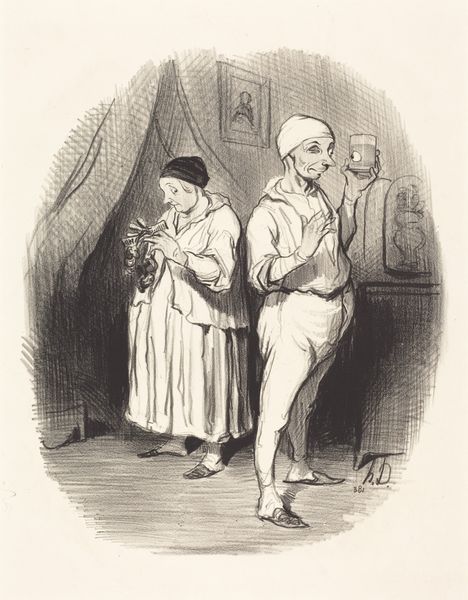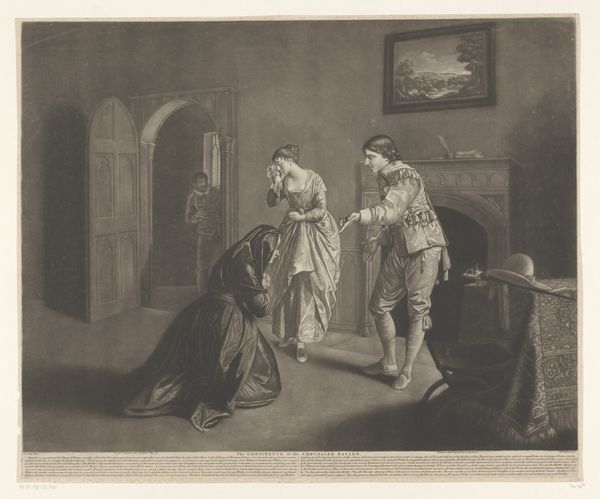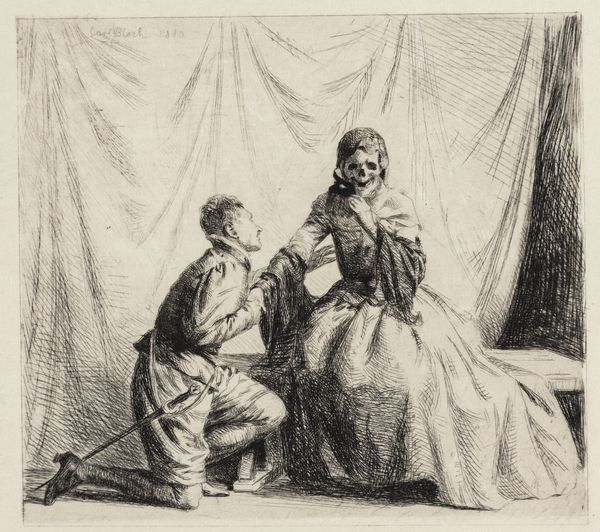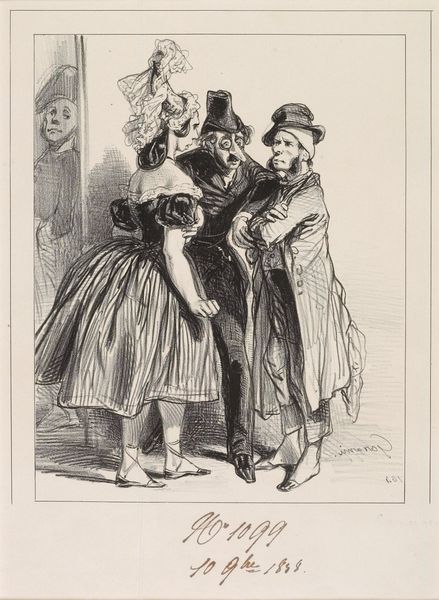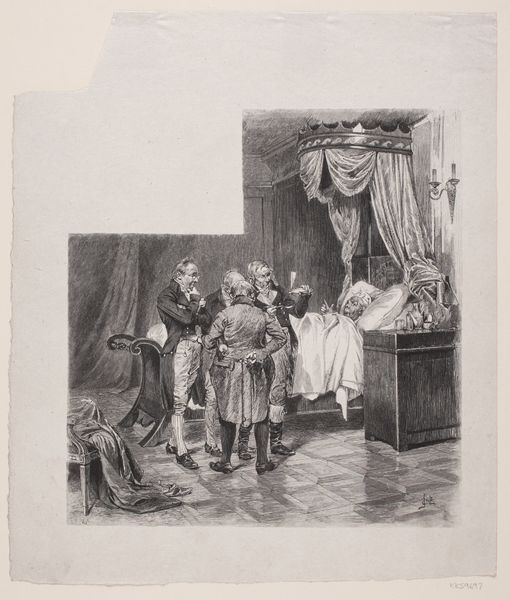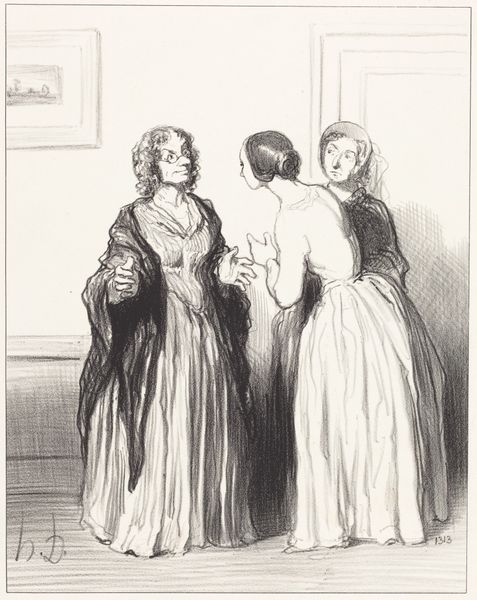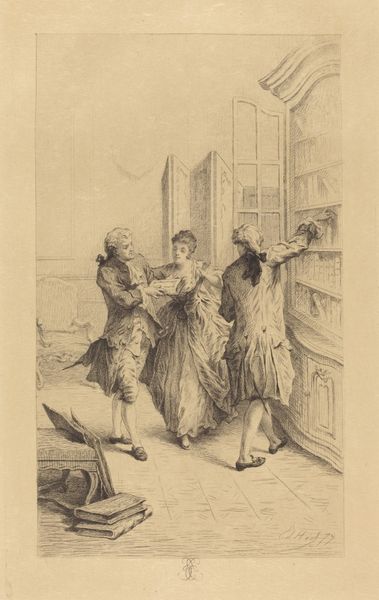
drawing, lithograph, print
#
portrait
#
drawing
#
lithograph
# print
#
caricature
#
portrait drawing
#
genre-painting
#
realism
Copyright: National Gallery of Art: CC0 1.0
Curator: Here we have Honoré Daumier’s lithograph, "Le Beau sexe a l'école de natation," or "The Fair Sex at Swimming School," created in 1852. It’s a wonderful example of his social commentary through printmaking. Editor: Immediately, the contrast between the finely dressed woman and the rougher figures on either side of her strikes me. Their hands almost claw at her dress – it's both comedic and slightly unsettling. The materiality of the print itself seems key to conveying the rough-and-tumble quality of the scene. Curator: Exactly. Daumier frequently used lithography to critique the bourgeoisie, and this piece is no different. Consider the historical context – the July Monarchy's focus on industrialization led to significant social stratification. Daumier was often censored, but his work served as a popular form of social critique. Editor: I’m drawn to the actual process of lithography here. The grease pencil on stone, the labor involved in creating multiple impressions... it feels appropriate that such a medium is used to comment on social classes and perhaps even question what kind of labor allows this lady the leisure time for a swimming lesson. Curator: The "swimming school" is almost certainly a satirical stand-in for the artificiality of bourgeois life. Her apprehension amidst what should be a refreshing activity, flanked by these other, unrefined figures highlights Daumier’s argument. This speaks volumes about anxieties over maintaining social boundaries at the time. Editor: And even in the lithographic process, you can almost feel Daumier's hand shaping and defining these figures. He uses shading to give weight and mass to the instructors, making them feel present in the scene, almost trapping the "fair sex." I think it's fascinating how the medium supports the message of this caricature. Curator: Daumier's legacy lies in his unflinching commitment to social critique. This work isn't just funny; it's a snapshot of 19th-century French society's anxieties and hypocrisies laid bare for public consumption. Editor: Indeed. Considering the means of production reveals how this image permeated society. It's a testament to how potent art can be when it bridges craft, commentary, and class.
Comments
No comments
Be the first to comment and join the conversation on the ultimate creative platform.
